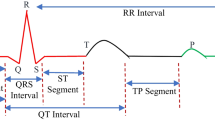Abstract
Large sensor networks have been proposed as part of structural health monitoring (SHM) systems for infrastructure safety. To apply SHM on large structures such as pipelines, a considerably large number of sensors are required. By increasing the number of sensors, the amount of data to communicate and analyze becomes a burden due to the required computational overhead, power and communication cost. In this paper, a new methodology for detection and tracking capable of minimizing the necessary collected data without compromising damage detection and tracking is presented. Our novel approach combines damage feature correlation and a probabilistic on/off scheme to minimize the required number of activated sensors for damage detection. The amount of preprocessing data to select the on sensors compared to the overall processing is considerably small. Consequently, the new approach minimizes power demand for limiting the amount of data being communicated and further promoting the use of wireless technologies. The randomness of the process leads to an efficient damage tracking method due to minimizing the overall cost of the system. A case study of corrosion damage detection and tracking in a steel pipeline is presented and discussed. It is shown that the proposed method enables successful damage detection and tracking with less than 25 % of the total installed sensors at any time of operation.










Similar content being viewed by others
References
Azarbayejani M, Jalalpour M, El-Osery AI, Reda Taha MM (2011) Field application of smart SHM using field programmable gate array (FPGA) technology to monitor an RC bridge in New Mexico. J Smart Mater Struct 20(8):085005
Azarbayejani M, Reda Taha MM, Ross TJ (2008) An inductive fuzzy damage classification approach for structural health monitoring. Int J Mater Struct Integr 2(3):193–206
Azarbayejani M, El-Osery A, Choi KK, Reda Taha MM (2008) A probabilistic approach for optimal sensor allocation in structural health monitoring. Smart Mater Struct ASCE 17:55019–55029
Buczak AL, Wang HH, Darabi H, Jafari MA (2001) Genetic algorithm convergences study for sensor network optimization. Inf Sci 133:267–282
Chakrabarty K, Chiu PK (2002) Grid coverage for surveillance and target location in distributed sensor networks. IEEE Trans Comput 51:1448–1453
Chang FK, Markmiller JFC (2006) A new look in design of intelligent structures with SHM. In: Proceedings of the 3rd European workshop: structural health monitoring, pp 5–20
Chang FK, Markmiller JFC, Ihn JB, Cheng KY (2007) A potential link from damage diagnostics to health prognostics of composites through built-in sensors. J Vib Acoust 129:718–729
Farrar C, Cornwell P, Doebling S, Prime M (2000) Monitoring studies of the alamosa canyon and I-40 bridges. Los Alamos National Laboratory, Los Alamos
Field RVJ, Grogoriu M (2006) Optimal design of sensor networks for vehicle detection, classification and monitoring. Probab Eng Mech 21:305–316
Guratzsch RF, Mahadevan S (2006) Sensor placement design for SHM under uncertainty. In: Proceedings of the 3rd European workshop: structural health monitoring, pp 1168–75
Kirkgaard PH, Brincker R (1999) On the optimal location of sensors for parameter identification of linear structural systems. Mech Syst Signal Process 8:639–647
Li DS, Li HN, Fritzen CP (2006) On the physical significance of the norm based sensor placement method. In: Proceedings of the 3rd European workshop on SHM, pp 1135–43
Lin YSF, Chiu PK (2005) A near optimal sensor placement algorithm to achieve complete coverage/discrimination in sensor networks. IEEE Commun Lett 9:43–45
Gupta P, Kumar PR (2000) The capacity of wireless networks. IEEE Trans Inf Theory 46(2):388–404
Nair KK, Kiremidjian AS, Law KH (2006) Time series-based damage detection and localization algorithm with application to the ASCE benchmark structure. J Sound Vib 291(1–2):349–368
Papadimitriou C, Beck JL, Au SK (2000) Entropy-based optimal sensor location for structural model updating. J Vib Control 6:781–800
Reda Reda Taha MM, Noureldin A, Osman A, El-Sheimy N (2004) Introduction to the use of wavelet multi-resolution analysis for intelligent structural health monitoring. Can J Civ Eng 31(5):719–731
Author information
Authors and Affiliations
Corresponding author
Rights and permissions
About this article
Cite this article
Jalalpour, M., Azarbayejani, M., El-Osery, A.I. et al. A new damage detection and tracking method using smart sensor network. J Civil Struct Health Monit 6, 291–301 (2016). https://doi.org/10.1007/s13349-016-0167-6
Received:
Revised:
Accepted:
Published:
Issue Date:
DOI: https://doi.org/10.1007/s13349-016-0167-6




